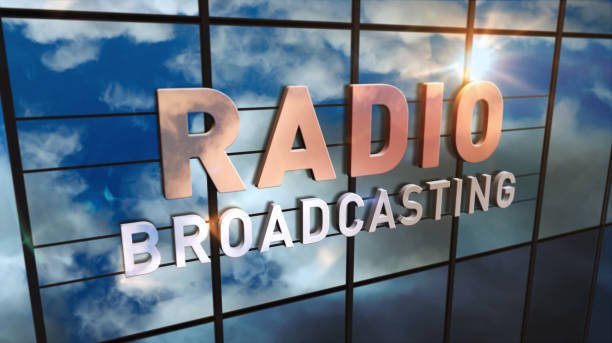The legal and financial landscape for telecommunications giant Verizon Communications Inc. recently reached a significant milestone. After facing allegations of improper administrative fees levied on customers, Verizon agreed to a $100 million class-action settlement. Customers eagerly awaited the payout, with eligible participants finally beginning to receive compensation as of January 6, 2025. This article unpacks the background of the settlement, the payout process, and its broader implications for consumers.
Background: The Lawsuit That Led to the Settlement
Verizon settlement payout faced a class-action lawsuit accusing the company of improperly charging administrative fees to customers without adequately disclosing them. These fees, ranging from $0.40 to $3.30 per month per line, were imposed on postpaid wireless plans between January 1, 2016, and November 8, 2023.
The plaintiffs alleged that the charges were presented in a misleading manner, effectively increasing customer bills beyond advertised rates. Verizon denied wrongdoing but opted to settle the case to avoid prolonged litigation, agreeing to a $100 million settlement fund.
Eligibility for the Settlement
The settlement applied to current and former Verizon customers in the U.S. who paid administrative charges during the specified period. To be eligible for a payout, claimants had to submit their information by April 15, 2024, through an official claims process. Customers provided their Verizon account details and selected a preferred method for receiving their payout, such as direct deposit, check, or digital payment platforms like PayPal or Venmo.
Settlement Payout Date and Distribution
The settlement payout date was officially scheduled for January 6, 2025, when Verizon began disbursing funds to eligible claimants. However, some customers noted that their payments arrived slightly later due to the volume of claims being processed.
How Payments Were Calculated
The settlement amount for each claimant varied depending on factors such as:
- The length of time the customer paid the administrative fees.
- The total number of valid claims submitted.
- The allocation of funds for administrative costs and attorneys’ fees.
While the settlement promised a minimum payout of $15 per claimant, some recipients reported receiving amounts as low as $3 to $5. This discrepancy was due to the unexpectedly high number of claims, which diluted the per-customer payout.
Customer Reactions to Payouts
The response from Verizon customers has been mixed. While some appreciated the opportunity to recoup fees they felt were unjustly charged, many expressed frustration over the low payouts. On social media and online forums, some customers voiced their disappointment, with comments like:
- “After years of overpaying, I only received $3.85. It’s not worth the effort I put into filing the claim.”
- “I’m glad Verizon was held accountable, but these payouts feel like a slap in the face.”
Despite these sentiments, others viewed the settlement as a step toward greater transparency and fairness in the industry.
Impact on Verizon and the Telecommunications Industry
1. Increased Scrutiny of Billing Practices
The lawsuit highlighted the importance of clear and transparent billing practices. Verizon’s administrative fees were not included in the advertised rates, leading to confusion and dissatisfaction among customers. This case serves as a cautionary tale for other telecommunications companies, urging them to prioritize transparency to avoid similar legal challenges.
2. Continuing Controversy Over Fees
Although the settlement addressed past fees, Verizon continues to charge administrative fees, which have reportedly increased in recent years. This has fueled ongoing frustration among customers, who argue that the settlement did not bring meaningful change to the company’s billing practices.
3. Consumer Awareness
The Verizon settlement has raised awareness about the importance of scrutinizing bills for hidden charges. Customers are now more vigilant about monitoring their accounts and questioning unexplained fees.
How Customers Can Check Their Payout Status
For claimants who have yet to receive their payout or want to confirm their payment status, the settlement administrator offers resources to assist:
- Visit the Settlement Website: The official settlement website provides updates and contact information for further inquiries.
- Payment Methods: Ensure the selected payment method (e.g., PayPal, Venmo, or direct deposit) is active and linked correctly.
- Customer Support: Reach out to the settlement administrator directly for assistance with unresolved issues.
Lessons from the Verizon Settlement
The Verizon settlement underscores several key lessons for consumers and companies alike:
1. Importance of Transparency
Hidden fees have long been a source of contention in industries like telecommunications and finance. The lawsuit serves as a reminder that transparency is not just good business practice but also a legal obligation.
2. Active Consumer Participation
Consumers who actively monitor their bills and participate in legal claims can hold corporations accountable. The high number of claims in this case demonstrates the power of collective action.
3. Understanding Class-Action Settlements
While class-action settlements offer a pathway for restitution, they often involve compromises. Administrative costs and high claimant volumes can dilute payouts, which is an important consideration for participants.
Future Implications
For Verizon, the settlement may close a legal chapter, but it opens a broader conversation about ethical billing practices. As competition in the telecommunications industry intensifies, companies must balance profitability with customer trust. Transparent billing and proactive communication can be key differentiators in this landscape.
For customers, the settlement highlights the value of staying informed. By reading the fine print and questioning unexpected charges, consumers can better protect their interests and advocate for fair treatment.
Conclusion
The Verizon settlement payout date marked a significant moment for customers seeking restitution for undisclosed administrative fees. While the settlement’s execution faced criticism over small payouts, it nonetheless stands as a win for consumer rights and corporate accountability.
As the telecommunications industry evolves, the lessons from this case will likely influence future practices, emphasizing transparency and fairness in customer billing. For consumers, it’s a reminder to stay vigilant and proactive in advocating for their rights in an increasingly complex digital and financial landscape.










